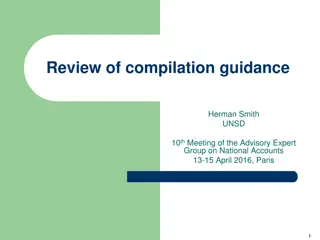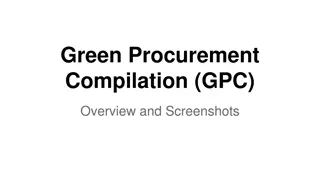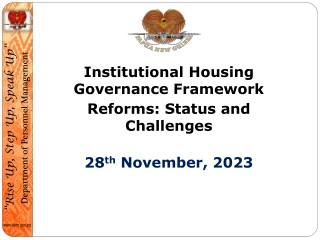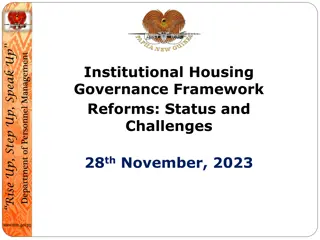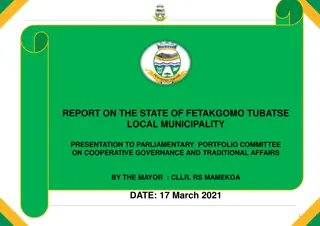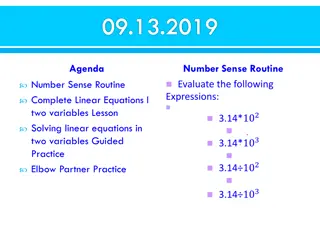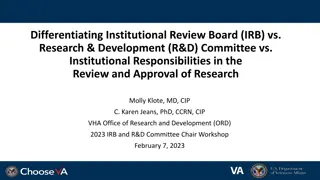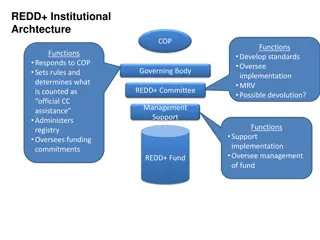Institutional Arrangement for GRP Compilation: Challenges and Solutions
The content discusses the institutional arrangement for compiling Gross Regional Products (GRPs) by either regional statistical offices or National Statistical Offices (NSO). It highlights the pros and cons of both approaches, focusing on factors like regional demand, fiscal constraints, data accuracy, and training. Recommendations for improvement include integrated sampling schemes, standardizing deflators, and utilizing trained statisticians at NSOs. Additionally, it raises questions on deflation methods, informal activities estimation, and employment monitoring in developing countries.
- GRP compilation
- National Statistical Offices
- Regional statistical offices
- Data accuracy
- Employment monitoring
Download Presentation

Please find below an Image/Link to download the presentation.
The content on the website is provided AS IS for your information and personal use only. It may not be sold, licensed, or shared on other websites without obtaining consent from the author. Download presentation by click this link. If you encounter any issues during the download, it is possible that the publisher has removed the file from their server.
E N D
Presentation Transcript
Viet Vu Consultant to United Nations Statistics Division 15-17 March 2010
Institutional arrangement: should GRPs compiled by regional statistical offices or NSO? Why GRP compilation by regional offices? Strong demand of regional government to plan and monitor the development of regional economy; Fiscal constraint of national statistical offices. Disadvantages: Do not have full information on national activities at regional levels; Corporations registered/reported to local levels may have operations elsewhere; Problems in measuring services, particularly in constant prices; Discrepancies between sum of GRPs and GDP; Total staff in GRP compilation in the whole country is high and may not be adequately trained. Possible improvement Economic data are collected within an integrated sampling scheme to satisfy both national and regional needs; Benchmark value added coefficients and price deflators prepared by NSO and provided to regional offices.
institutional arrangement: should GRPs compiled by regional statistical offices or NSO? (2) Why should GRP be compiled by NSO All the disadvantages created by GRP compilation at regional levels are eliminated; All information available at NSO can be utilized, allowing for cross checking of one region against other regions and national averages; Equality between the sum of GRPs and GDP is guaranteed at both current and constant prices; Statistical methods can be appropriately utilized and well coordinated by better trained statisticians; Regional political interference is avoided.
Issues for discussion Institutional arrangement: Should GRPs be compiled centrally by NSO? GRP at constant prices: Should national price or regional price indexes be used for deflation? Indicators for estimation and extrapolation:
Issues for discussion (cont.) Informal activities at regional levels: Should benchmark household income and expenditure be implemented at both national and regional levels every five years and on the basis of this benchmark information, estimate quarterly and annual information using employment data? Is it possible to have annual household income and expenditure survey for both national and regional purposes or is it too expensive? Should employment by both Establishment Survey (ES) and by Labor Force Survey (LFS) be recommended for developing countries to use for not only estimating informal activities but also monitoring employment in the country? Other alternatives?



